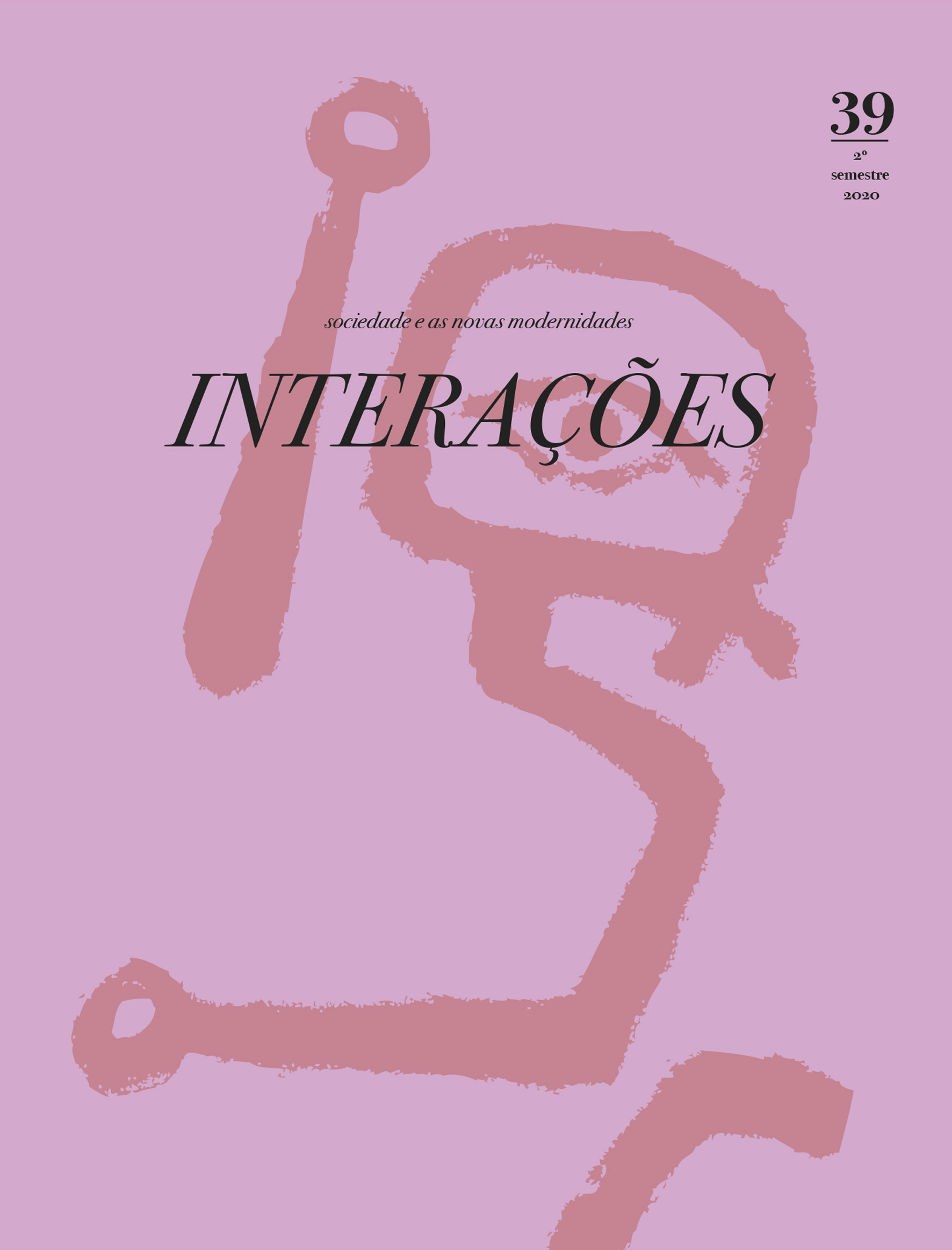Couture of the Corpse: Fashion, Class, Time, and the Undead in The Hunger
DOI:
https://doi.org/10.31211/interacoes.n39.2020.a7Keywords:
vampire, fashion, The Hunger, undead chic, corpse coutureAbstract
When viewed from the lens of couture and class, the contemporary portrayal of the vampire as iconic in both sociopolitical and aesthetic spheres, and as icons of various subaltern, outsider, or what I call 'demimondeur' lifestyles, subcultures, and their attendant styles/fashions, offers an interesting analytical frame through which to examine the dialogic relationship between ideology, time, fashion, and class. Referring to Marxist thought concerning vampire capitalism and time, this chapter will discuss the issues and debates surrounding the portrayal of the figure of the vampire as what I will theorize to be a 'pure consumer', sociopolitical elite, and sociopolitical outsider, and its figuration of both the atemporality and spuriousness of ideology in The Hunger (1983). Using the Bauhaus post-punk couture or style of the undead in the film as an analytical frame, the methodology of this paper will be to perform a close reading of the film as a case study, focussing on its engagement with the sociopolitics, cultures, and phenomena of wealth, style, privilege, and time(lessnes).
Downloads
References
Edmundson, M. (1997). Nightmare on Main Street: Angels, Sadomasochism, and the Culture of Gothic. Cambridge, Massachusetts: Harvard University Press.
Frayling, C. (1992). Vampyres: Lord Byron to Count Dracula. London: Faber and Faber.
Haraway, D. (1997). Modest_Witness@Second_Millennium.FemaleMan_Meets_Onco Mouseâ„¢:Feminism and Technoscience. New York: Routledge.
Kennedy, P. (2017). Vampire Capitalism: Fractured Societies and Alternative Futures. London: Palgrave Macmillan.
Marx, M. (1867 [1976]). Capital: A Critique of Political Economy, Volume 1 (1867), trans. Ben Fowkes. Harmondsworth: Penguin.
Moretti, F. (1983). Signs Taken for Wonders: Essays in the Sociology of Literary Forms. London: Verso.
Neocleous, M. (2003). The Political Economy of the Dead: Marx’s Vampires, History of Political Thought, 14(4), 668-684.
Skal, D. J. (1993). The Monster Show: A Cultural History of Horror. New York: Farrar, Straus, and Giroux.
Strieber, W. (1983). The Hunger. Directed by Tony Scott. Los Angeles: Metro-Goldwyn-Mayer.
n.a. (2013, July). "Vampires Wear Yves Saint Laurent: Tony Scott’s The Hunger @ the Cristobal Balenciaga Museum." Irenebrination: Notes on Architecture, Art, Fashion, Fashion Law & Technology. https://www.irenebrination.com/irenebrination_notes_on_a/2013/07/the-hunger-balenciaga-museum.html
Downloads
Published
How to Cite
Issue
Section
License
Copyright (c) 2020 Kwasu David Tembo

This work is licensed under a Creative Commons Attribution-NonCommercial 4.0 International License.
The copyright of published works is retained by the author who grants Interações the original publication right. The published article can be used freely for educational, non-commercial purposes, in accordance with the Creative Commons License - Attribution-Non-Commercial 4.0 International, provided that the author, the title of the article, the title and number of the journal are cited together with the URL or DOI of the article.



